Breaking Transfection Barriers: Mergene1000® Hep G2 Cell-Specific DNA Transfection Reagent Delivers Superior Gene Transfer
Sep 24,2025
Hep G2 cells are widely regarded as the “star” of liver research. Combining key hepatic functions with ease of cultivation, they serve as an ideal in vitro model for studying liver disease, drug metabolism, and hepatotoxicity. Yet low transfection efficiency remains a persistent challenge.
In this edition of Cell Culture Academy, we highlight the applications of Hep G2 cells, examine the barriers that hinder efficient transfection, and introduce a dedicated high efficiency solution: Mergene1000® Hep G2 Cell-Specific DNA Transfection Reagent.
Ⅰ. Application Scope of Hep G2 Cells
In vitro, Hep G2 cells can differentiate to form both apical and basal surfaces, effectively mimicking liver architecture. This makes them ideal for a range of studies, including:
1. Hepatocyte molecular transport and related disorders, including progressive familial intrahepatic cholestasis and Dubin–Johnson syndrome, and others.
2. Hepatotoxicity and drug metabolism research: enabling identification of liver metabolites while reducing reliance on in vivo experiments.
3. Artificial liver device development.
Gene transfection is commonly used in these studies, allowing researchers to introduce exogenous nucleic acids for gene editing, silencing, or overexpression, thereby regulating disease-related protein levels. However, in practice, researchers face a challenge, Hep G2 cells exhibit low transfection efficiency
Ⅱ. Hep G2 Cells Transfection Challenges
Hep G2 cells are widely recognized as a difficult-to-transfect cell line[1-2]. While the precise mechanisms have not been fully elucidated, experimental observations suggest several factors contribute to their low transfection efficiency:
1. Cell behavior: Hep G2 cells are highly adherent and tend to form clusters during high-density culture or passaging. This reduces effective contact between exogenous nucleic acids and individual cells, thereby lowering transfection efficiency.
2. Endocytic pathways: Different transfection reagents rely on distinct endocytic mechanisms to enter cells. Hep G2 cells have relatively limited endocytic pathways[2-3] and display selectivity toward certain reagents, which may further restrict transfection efficiency.
Together, these factors result in consistently low transfection efficiency in Hep G2 cells. Although many commercially available general-purpose transfection reagents claim high efficiency with Hep G2, extensive customer feedback and experimental testing indicate that actual performance is often limited. These challenges pose significant obstacles for researchers, slowing experimental progress and hindering results. As a result, there is an urgent need for a more efficient, Hep G2–specific transfection solution.
III. Mergene1000® Hep G2 Cells-Specific Transfection Solution
Pricella® has thoroughly analyzed Hep G2 cell characteristics and, after extensive screening and optimization, developed the Mergene1000® DNA Transfection Reagent .
1. Key Features
A. Hep G2-specific formulation with high transfection efficiency
Unique formulation and advanced technology: The reagent forms stable, highly efficient DNA complexes that easily cross the Hep G2 cell membrane and deliver DNA precisely.
Significantly enhanced transfection efficiency
Extensive testing has shown that Mergene1000® dramatically boosts transfection efficiency and gene expression in Hep G2 cells, helping researchers achieve faster, more reliable results.
B. Low cell cytotoxicity, worry-free cell health
Improving transfection efficiency is essential, but reagent safety is equally important. Highly toxic transfection reagents can disrupt normal cellular functions, compromise cell health, and even cause significant cell death, undermining the accuracy and reliability of experimental results.
Pricella® conducted a thorough toxicity assessment of the Mergene1000® Hep G2 Cell-Specific DNA Transfection Reagent. Its mild, low-toxicity formula preserves cell viability, ensuring downstream functional assays proceed smoothly and results remain reliable.
C. Easy-to-use, streamlined workflow
Research can be complex, and complicated transfection procedures add unnecessary burden. To simplify the process, Pricella® optimized the workflow for this reagent, no complicated pre-or post-treatment steps are needed. After adding the reagent, there’s no need to remove complexes or change the medium. Transfection is completed in just two steps: “mixing and incubation,” saving both time and effort (Figure 1)
D. Expert technical support, worry-free before and after sales
Comprehensive Service System: Built on over a decade of industry expertise, Pricella® has established a full-service system covering pre-sales, sales, and post-sales support.
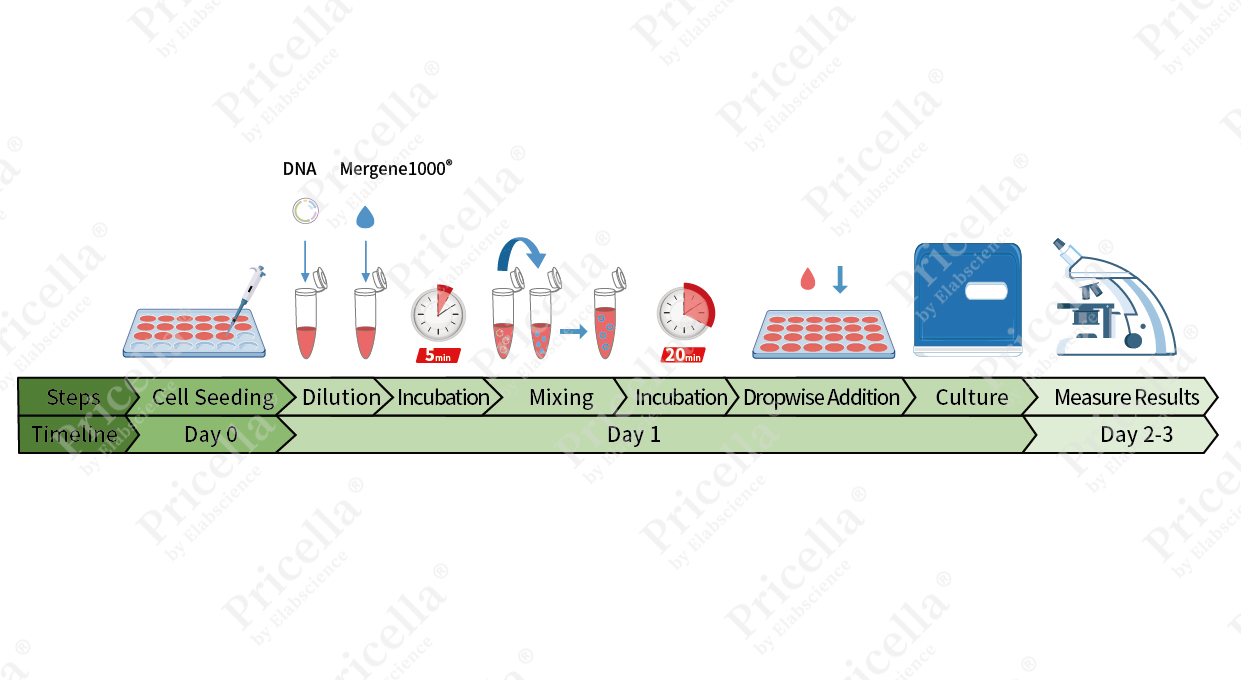
Figure 1. Product operation flowchart
Professional Team Assistance: If you encounter any issues while using the Mergene1000® Hep G2 Cell-Specific DNA Transfection Reagent, our dedicated team will provide one-on-one guidance whenever needed, ensuring your research progresses smoothly!
2. Important Transfection Points
To achieve the best results with the Mergene1000® Hep G2 Cell-Specific DNA Transfection Reagent, Pricella® has optimized key factors such as cell culture conditions, reagent formulation, plasmid quality and concentration, and transfection timing and incubation temperature. Please keep the following points in mind during use:
A. Cell Condition and Density
Cell condition and density are critical for transfection efficiency. Use Hep G2 cells in the logarithmic growth phase with good viability, and avoid cells that have been passaged too many times or that show signs of contamination. For transfection, aim for 60–70% confluency (no lower than 60%). Adjust seeding density as needed based on cell growth. We recommend culturing with Hep G2 Cell Complete Medium to maintain cells in their optimal physiological state.
B. DNA Concentration and Reagent Ratio
When seeding cells into multi-well plates after digestion, add equal volumes of cell suspension to each well to ensure consistent density. Determine the optimal DNA-to-reagent ratio by running gradient tests. Evaluate transfection efficiency using fluorescence microscopy and flow cytometry, and assess cell viability with the CCK-8 assay. Select the ratio that provides the best balance of high transfection efficiency and low cytotoxicity.
C. Incubation Time and Temperature
Incubation time with the transfection complex is another key factor that directly affects transfection outcomes. If the incubation period is too short, the complex may not fully enter the cells, resulting in low efficiency. If it is too long, reagent toxicity may increase and compromise cell health. Through systematic testing across different incubation times and temperatures, the optimal conditions were identified as 20 min for complex incubation, followed by 48 h of culture at 37℃ with 5% CO2.
3. Experimental Results Display
The enhanced green fluorescent protein (EGFP) gene was delivered into Hep G2 cells using both the Mergene1000® Hep G2 Cell-Specific DNA Transfection Reagent and T Brand L3000. Transfection efficiency was assessed by microscopy and flow cytometry (Figure 2).
|
Mergene1000® |
T Brand L3000 |
|
|---|---|---|
|
Microscopic View of Cell Morphology |
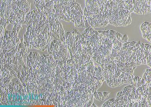 |
 |
|
Immunofluorescence Identification
(EGFP) |
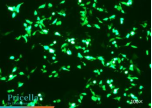 |
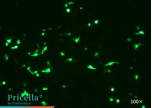 |
|
Flow cytometry detection
(Transfection Performance) |
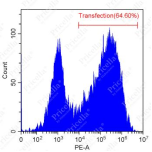 |
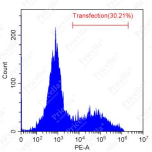 |
Figure 2. Hep G2 cells transfected with EGFP expression plasmid
(The comparison experiment was strictly conducted according to the instructions in the product manuals.)
Experimental results: Using Mergene1000® Hep G2 Cell-Specific DNA Transfection Reagent, cells exhibited optimal conditions, and both EGFP expression intensity and transfection efficiency were significantly higher than those with Brand T L3000, highlighting its high efficiency and low cytotoxicity in Hep G2 cells.
Mergene1000® Hep G2 Cell-Specific DNA Transfection Reagent offers high transfection efficiency, minimal toxicity, and easy handling, making it the ideal choice for Hep G2 transfection experiments.
References
[1] Berthier A, Staels B, Lefebvre P. An optimized protocol with a stepwise approach to identify specific nuclear receptor ligands from cultured mammalian cells. STAR Protocols. 2021;2(3):100658.
[2] Kim K, Ryu K, Cho H. Effects of decomplexation rates on ternary gene complex transfection with α-Poly(l-Lysine) or ε-Poly(l-Lysine) as a decomplexation controller in an easy-to-transfect cell or a hard-to-transfect cell. Pharmaceutics. 2020 May 28;12(6):490.
[3] N. Nabar,T.G. Dacoba,G. Covarrubias,D. Electrostatic adsorption of polyanions onto lipid nanoparticles controls uptake, trafficking, and transfection of RNA and DNA therapies. Proceedings of the National Academy of Sciences of the United States of America. 2024 Mar 12;121(11):e2307809121.
Prev: The Guide to MCF 10A Culture: From Key Characteristics to Practical Tips
Next: Key Points for the Isolation and Culture of Endothelial Cells: Avoiding Pitfalls with Precision


